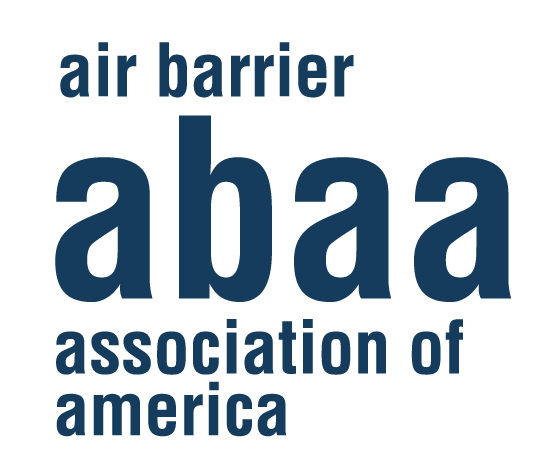Member Spotlight: Luis Alfaro
Luis Alfaro
The Air Barrier Association of America (ABAA) dives inside the career of Luis Alfaro

Name: Luis Alfaro
Title: Project Manager
Firm: Cameron Building Envelope Specialists
City: Elkridge, Maryland
I am a dedicated professional in the building envelope industry, currently serving as a Project Manager at Cameron Building Envelope Specialists. My journey began as a Field Foreman, where I led air barrier system installations with precision and efficiency. After a few years, my commitment to quality and leadership skills earned me a promotion to Field Superintendent, allowing me to manage multiple projects and mentor foremen to ensure the best installation practices.
As I continued to grow in my role, I was given the opportunity to transition into project management, where I now work closely with superintendents and foremen to guide, educate, and maintain the highest standards in air barrier system installations. I embrace every challenge as an opportunity to learn and expand my expertise, always striving to improve project execution and provide our clients with the best possible experience. My passion for excellence and hands-on approach drive me to deliver top-quality building envelope solutions while fostering growth and innovation within my team.
DO NOT USE - USED TO KEEP ACCORDION CLOSED INITIALLY
What's a project you've worked on that you're especially proud of and why?
A: Suitland High School is a project I take great pride in being a part of, as it is one of the largest school developments in Maryland. Its scale and significance make it a landmark project, and contributing to its success is both a professional achievement and a meaningful opportunity to impact the community.
How does proper air barrier installation contribute to overall building performance and sustainability?
A: Air barrier installation enhances building performance and sustainability by improving energy efficiency, moisture control, indoor air quality, and durability. It reduces air leakage, minimizing heat loss and energy consumption, while preventing moisture infiltration that can cause mold and structural damage. By limiting pollutants and protecting insulation performance, air barriers contribute to a healthier indoor environment and extend the building’s lifespan. Additionally, they help meet energy codes and sustainability certifications like LEED, supporting overall efficiency and environmental impact reduction.
How has earning your Level 3 Certification impacted your career and business opportunities?
A: My Level 3 certification has been instrumental in expanding my expertise in air barrier systems, enhancing both my technical knowledge and practical skills. Through comprehensive training, I have gained a deeper understanding of the purpose and function of air barriers, as well as the critical components required to create a complete and effective system. This certification has not only reinforced my previous experience but has also allowed me to refine my ability to assess, install, and ensure the performance of air barrier systems to the highest standards.
What's one challenge you've faced in the field, and how did you overcome it?
A: One of the primary challenges in the field is working with architectural details that, while well-intended, are not always practical for real-world application. Many designs present complexities that can make proper installation difficult, requiring field adjustments to maintain the integrity of the air barrier system. The most significant hurdle is troubleshooting these issues and identifying viable alternatives that ensure a continuous, high-performing barrier while aligning with design intent and construction feasibility.
How do you educate clients or general contractors on the importance of air barriers?
A: Most general contractors and clients are already aware of the importance of air barrier systems, but for those who are not, we take the time to educate them on their critical role in building performance. We provide a clear explanation of how air barriers enhance energy efficiency, moisture control, and overall durability, ensuring their structures meet high-performance standards. During these discussions, we emphasize that the air barrier is one of the most essential components of the building envelope, directly impacting long-term sustainability, occupant comfort, and compliance with energy codes. Our goal is to ensure all stakeholders understand its significance and value in achieving a well-built, high-performing structure.
What's a common mistake you see in air barrier installation and how can it be avoided?
A: Common mistakes in air barrier installation often stem from installer errors or design challenges that do not align with real-world site conditions. These issues can compromise the integrity and performance of the system, leading to inefficiencies, air leakage, and moisture infiltration. To mitigate these risks, it is essential to ensure that all installers are thoroughly trained and well-versed in best practices for air barrier application. Additionally, proactive communication with architects and design teams is crucial when detailing conflicts arise. By providing clear explanations and practical solutions, we can help refine designs to better suit field conditions, ensuring a continuous and effective air barrier system.
What tools or technologies have made the biggest impact on how you do your job?
A: From a technical perspective, effectively addressing issues and conflicts in air barrier installation requires a combination of key resources: a computer for detailed analysis, a comprehensive set of drawings for reference, and direct support from the manufacturer for expert guidance. These tools play a crucial role in identifying and resolving challenges, ensuring that design intent aligns with practical application. By leveraging technology, accurate documentation, and manufacturer expertise, we can make informed decisions that enhance installation quality, minimize delays, and maintain the integrity of the air barrier system.
What do you wish more people understood about the work of air barrier installers?
A: I wish more people would understand that an effective air barrier system is crucial for maintaining a building’s energy efficiency, durability, and overall performance. Unfortunately, many trades overlook its significance, often leading to unnecessary damage that compromises the system’s integrity. When penetrations, cuts, or improper installations occur, they create potential pathways for air and moisture infiltration, increasing the risk of leaks, mold, and reduced thermal performance. By fostering a greater understanding among all trades about the role of air barriers, we can work collaboratively to minimize damages, ensure proper installation, and uphold the long-term efficiency and resilience of the building envelope. Proactive coordination and adherence to best practices can significantly reduce costly repairs and performance issues down the line.
How do you stay up to date with industry standards, training, or new installation techniques?
A: Staying informed about industry advancements is essential for maintaining high-quality project execution and ensuring compliance with evolving standards. I regularly stay up to date by reading industry articles, reviewing technical publications, and engaging with communications from our manufacturers’ representatives. These resources provide valuable insights into new materials, installation techniques, and best practices, allowing me to make informed decisions that enhance project efficiency and durability. By continuously expanding my knowledge, I can better anticipate challenges, implement innovative solutions, and collaborate effectively with project teams to achieve optimal results.

